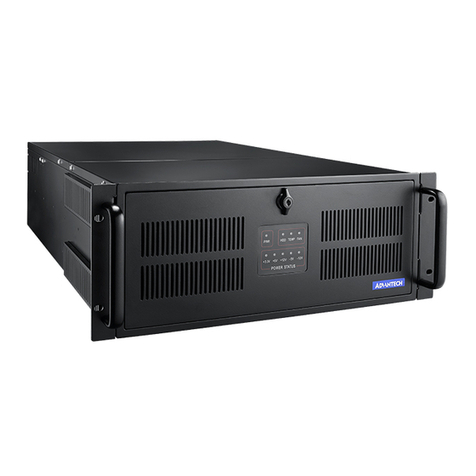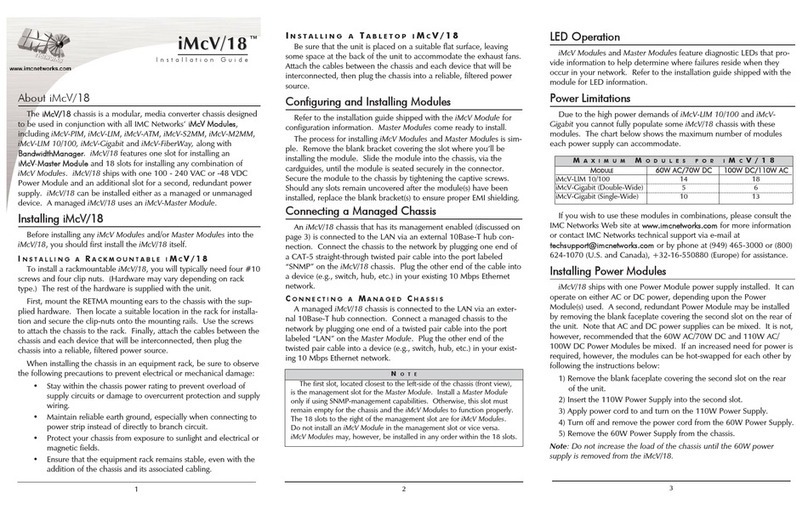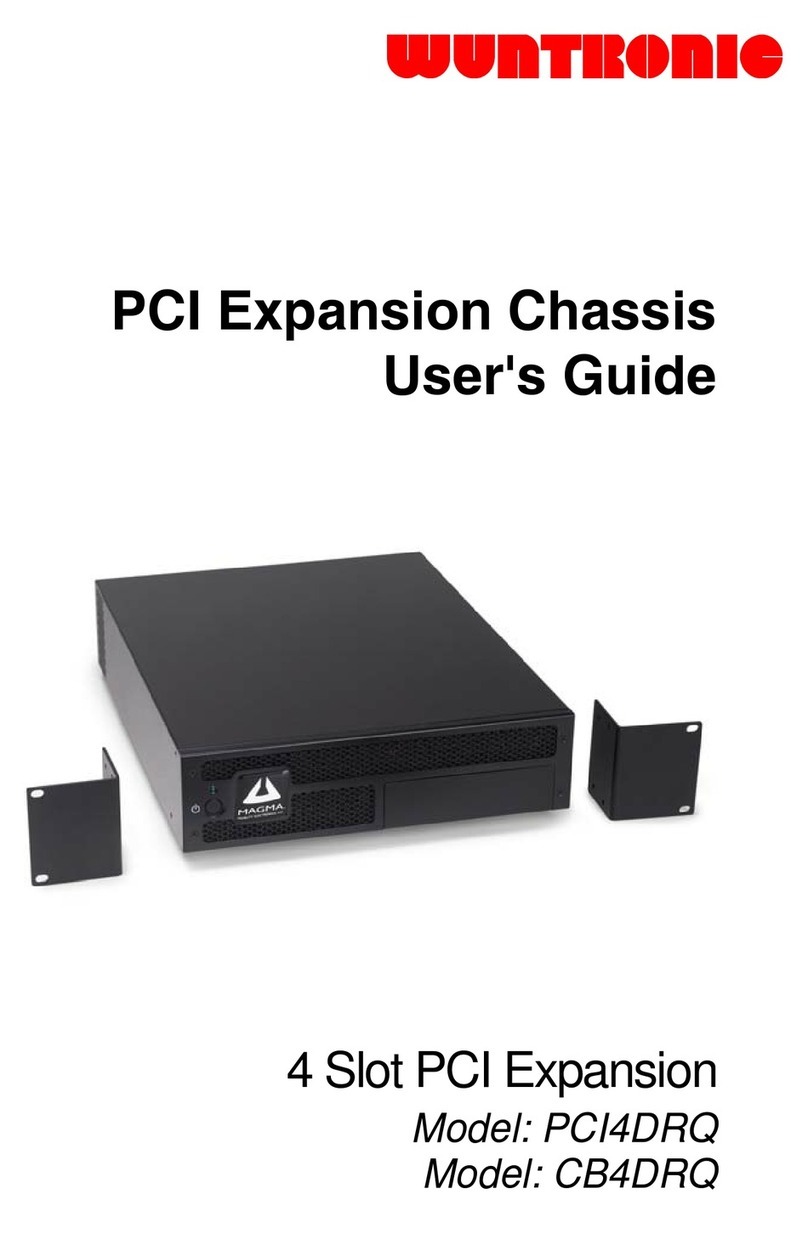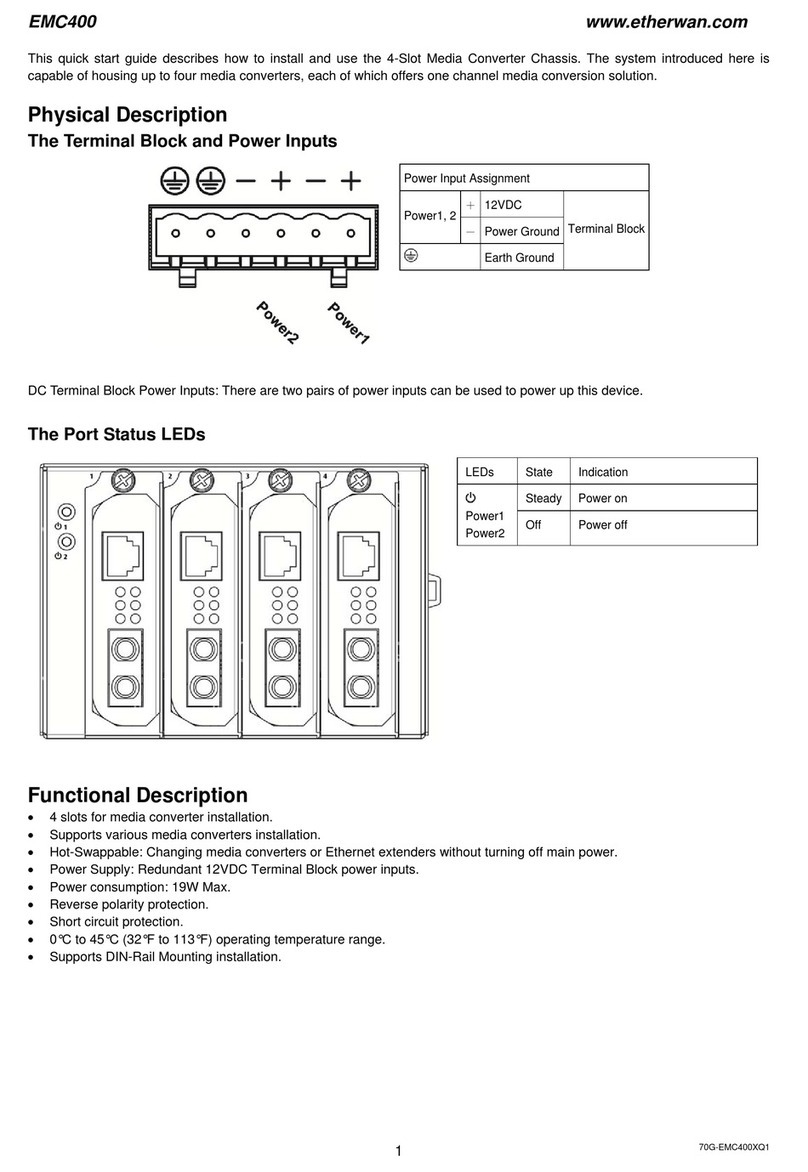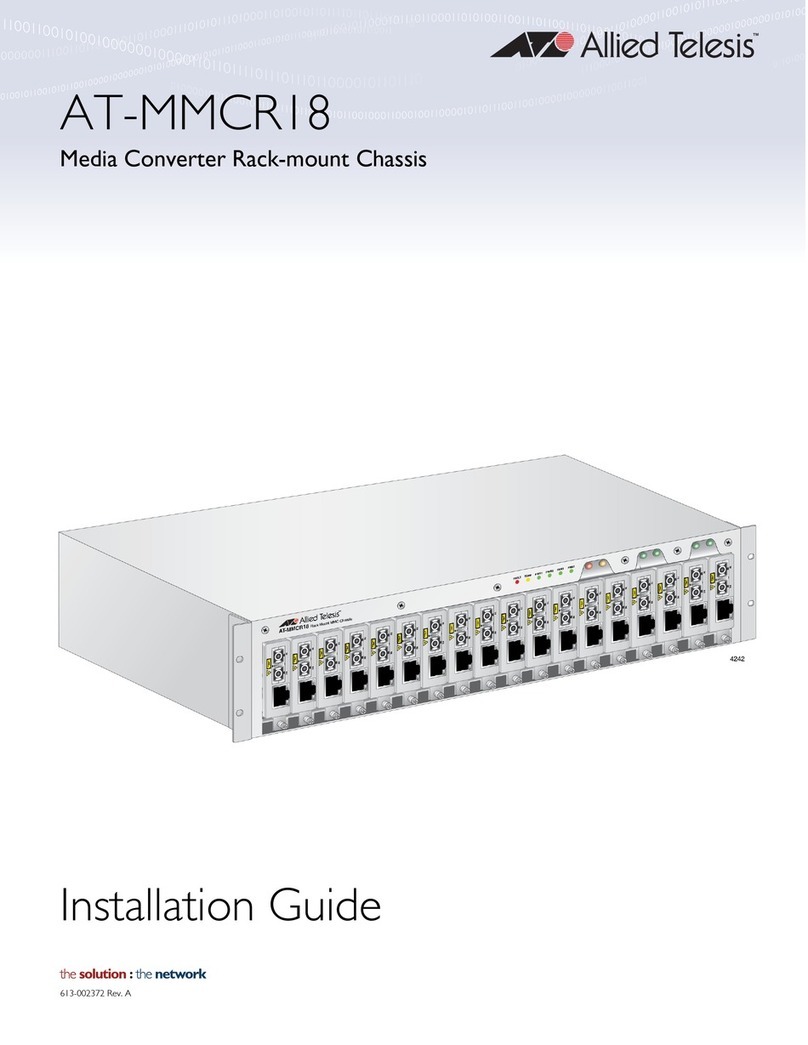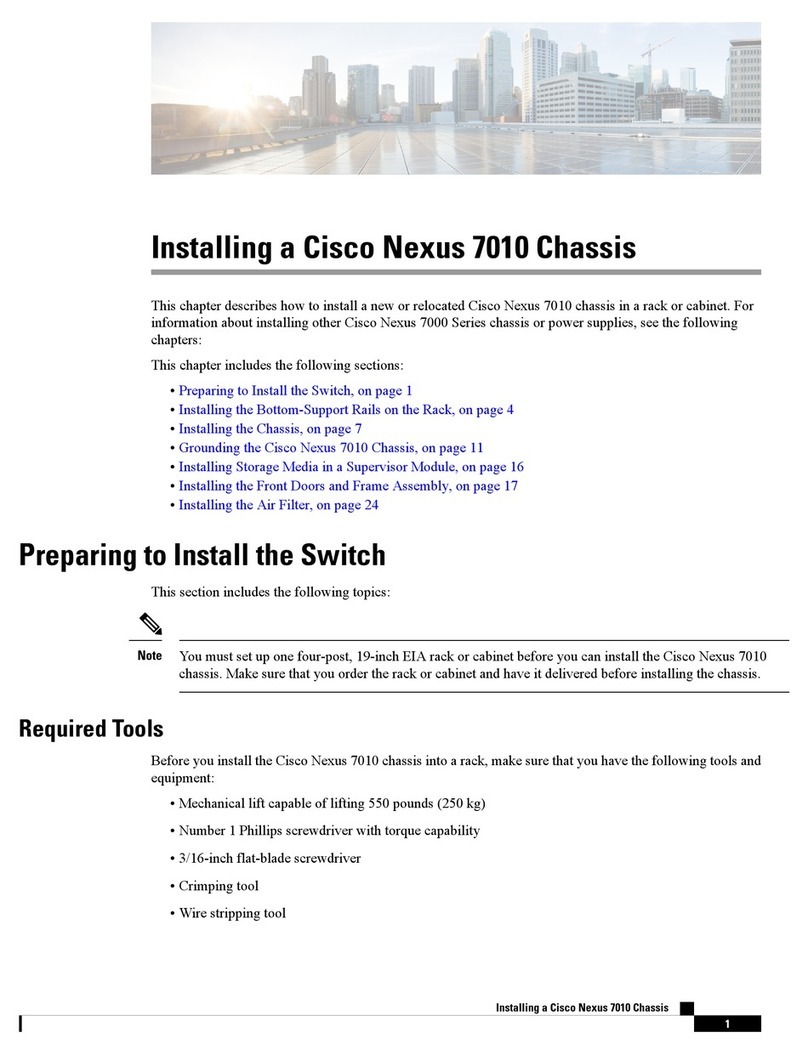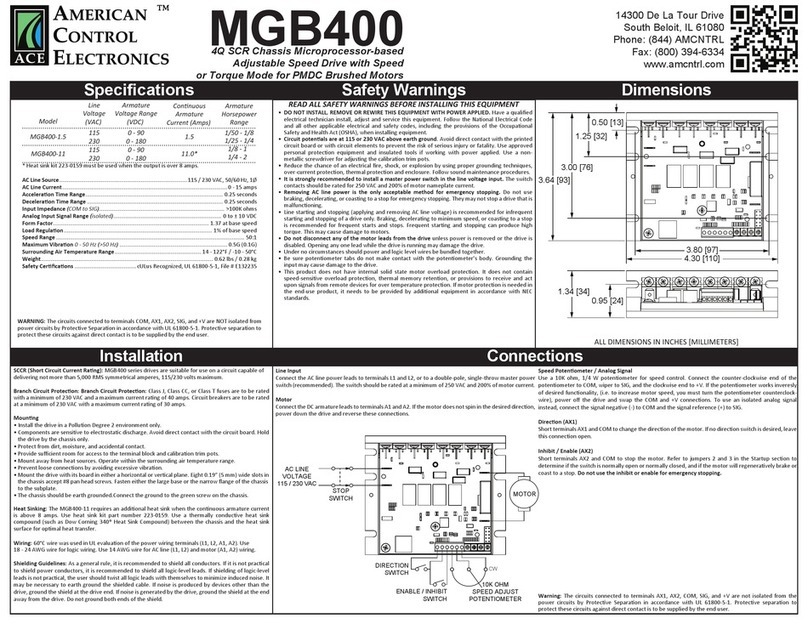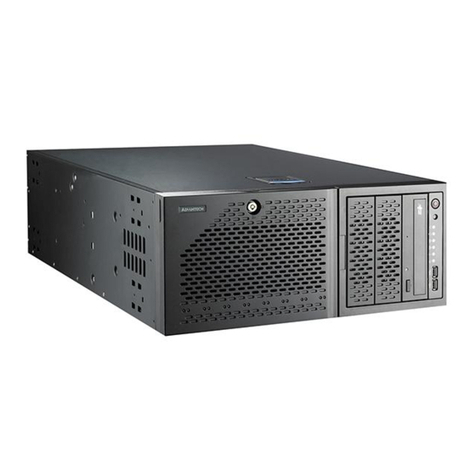NetApp AAF A700 User manual

Chassis
ONTAP Systems
NetApp
November 23, 2021
This PDF was generated from https://docs.netapp.com/us-en/ontap-systems/fas9000/chassis-replace-
overview.html on November 23, 2021. Always check docs.netapp.com for the latest.

Table of Contents
Chassis. . . . . . . . . . . . . . . . . . . . . . . . . . . . . . . . . . . . . . . . . . . . . . . . . . . . . . . . . . . . . . . . . . . . . . . . . . . . . . . . . Ê1
Replace the chassis - AFF A700 and FAS9000 . . . . . . . . . . . . . . . . . . . . . . . . . . . . . . . . . . . . . . . . . . . . . . . Ê1
Shut down the controllers - AFF A700 and FAS9000. . . . . . . . . . . . . . . . . . . . . . . . . . . . . . . . . . . . . . . . . . . . Ê1
Move and replace hardware - AFF A700 and FAS9000. . . . . . . . . . . . . . . . . . . . . . . . . . . . . . . . . . . . . . . . . . Ê4
Complete the restoration and replacement process - AFF A700 and FAS9000 . . . . . . . . . . . . . . . . . . . . . . Ê12

Chassis
Replace the chassis - AFF A700 and FAS9000
All other components in the system must be functioning properly; if not, you must contact
technical support.
•You can use this procedure with all versions of ONTAP supported by your system.
•This procedure is disruptive. For a two-node cluster, you will have a complete service outage and a partial
outage in a multi-node cluster.
Shut down the controllers - AFF A700 and FAS9000
Option 1: Shut down the controllers
You must shut down the node or nodes in the chassis prior to moving them to the new
chassis.
About this task
•If you have a cluster with more than two nodes, it must be in quorum. If the cluster is not in quorum or a
healthy node shows false for eligibility and health, you must correct the issue before shutting down the
impaired node; see the Administration overview with the CLI.
•If AutoSupport is enabled, suppress automatic case creation by invoking an AutoSupport message:
system node autosupport invoke -node * -type all -message
MAINT=number_of_hours_downh
The following AutoSupport message suppresses automatic case creation for two hours: cluster1:*>
system node autosupport invoke -node * -type all -message MAINT=2h
Steps
1. If your system has two controller modules, disable the HA pair.
If your system is running
clustered ONTAP with…
Then…
Two nodes in the cluster cluster ha modify -configured false storage failover
modify -node node0 -enabled false
More than two nodes in the
cluster
storage failover modify -node node0 -enabled false
2. Halt the node, pressing ywhen you are prompted to confirm the halt: system node halt -node
node_name
The confirmation message looks like the following:
1

Warning: Rebooting or halting node
"node_name" in an HA-enabled cluster may result in client disruption or
data access
failure. To ensure continuity of service, use the "storage
failover takeover" command. Are you sure you want to halt node
"node_name"? {y|n}:
You must perform a clean system shutdown before replacing the chassis to avoid losing
unwritten data in the nonvolatile memory (NVMEM). If the NVMEM LED is flashing, there is
content in the NVMEM that has not been saved to disk. You need to reboot the node and
start from the beginning of this procedure. If repeated attempts to cleanly shut down the
node fail, be aware that you might lose any data that was not saved to disk.
3. Where applicable, halt the second node to avoid a possible quorum error message in an HA pair
configuration: system node halt -node second_node_name -ignore-quorum-warnings true
Option 2: Shut down a node in a two-node MetroCluster configuration
To shut down the impaired node, you must determine the status of the node and, if
necessary, switch over the node so that the healthy node continues to serve data from
the impaired node storage.
About this task
•If you are using NetApp Storage Encryption, you must have reset the MSID using the instructions in the
"Returning SEDs to unprotected mode" section of Administration overview with the CLI.
•You must leave the power supplies turned on at the end of this procedure to provide power to the healthy
node.
Steps
1. Check the MetroCluster status to determine whether the impaired node has automatically switched over to
the healthy node: metrocluster show
2. Depending on whether an automatic switchover has occurred, proceed according to the following table:
If the impaired node… Then…
Has automatically switched over Proceed to the next step.
Has not automatically switched
over
Perform a planned switchover operation from the healthy node:
metrocluster switchover
Has not automatically switched
over, you attempted switchover
with the metrocluster
switchover command, and the
switchover was vetoed
Review the veto messages and, if possible, resolve the issue and try
again. If you are unable to resolve the issue, contact technical
support.
3. Resynchronize the data aggregates by running the metrocluster heal -phase aggregates
2

command from the surviving cluster.
controller_A_1::> metrocluster heal -phase aggregates
[Job 130] Job succeeded: Heal Aggregates is successful.
If the healing is vetoed, you have the option of reissuing the metrocluster heal command with the
-override-vetoes parameter. If you use this optional parameter, the system overrides any soft vetoes that
prevent the healing operation.
4. Verify that the operation has been completed by using the metrocluster operation show command.
controller_A_1::> metrocluster operation show
Ê Operation: heal-aggregates
Ê State: successful
Start Time: 7/25/2016 18:45:55
Ê End Time: 7/25/2016 18:45:56
Ê Errors: -
5. Check the state of the aggregates by using the storage aggregate show command.
controller_A_1::> storage aggregate show
Aggregate Size Available Used% State #Vols Nodes RAID
Status
--------- -------- --------- ----- ------- ------ ----------------
------------
...
aggr_b2 227.1GB 227.1GB 0% online 0 mcc1-a2
raid_dp, mirrored, normal...
6. Heal the root aggregates by using the metrocluster heal -phase root-aggregates command.
mcc1A::> metrocluster heal -phase root-aggregates
[Job 137] Job succeeded: Heal Root Aggregates is successful
If the healing is vetoed, you have the option of reissuing the metrocluster heal command with the
-override-vetoes parameter. If you use this optional parameter, the system overrides any soft vetoes that
prevent the healing operation.
7. Verify that the heal operation is complete by using the metrocluster operation show command on
the destination cluster:
3

mcc1A::> metrocluster operation show
Ê Operation: heal-root-aggregates
Ê State: successful
ÊStart Time: 7/29/2016 20:54:41
Ê End Time: 7/29/2016 20:54:42
Ê Errors: -
8. On the impaired controller module, disconnect the power supplies.
Move and replace hardware - AFF A700 and FAS9000
Step 1: Remove the power supplies
Steps
Removing the power supplies when replacing a chassis involves turning off, disconnecting, and then removing
the power supply from the old chassis.
1. If you are not already grounded, properly ground yourself.
2. Turn off the power supply and disconnect the power cables:
a. Turn off the power switch on the power supply.
b. Open the power cable retainer, and then unplug the power cable from the power supply.
c. Unplug the power cable from the power source.
3. Press and hold the orange button on the power supply handle, and then pull the power supply out of the
chassis.
When removing a power supply, always use two hands to support its weight.
4

Locking button
4. Repeat the preceding steps for any remaining power supplies.
Step 2: Remove the fans
To remove the fan modules when replacing the chassis, you must perform a specific
sequence of tasks.
Steps
1. Remove the bezel (if necessary) with two hands, by grasping the openings on each side of the bezel, and
then pulling it toward you until the bezel releases from the ball studs on the chassis frame.
2. Press the orange button on the fan module and pull the fan module straight out of the chassis, making sure
that you support it with your free hand.
The fan modules are short. Always support the bottom of the fan module with your free hand
so that it does not suddenly drop free from the chassis and injure you.
5

Orange release button
3. Set the fan module aside.
4. Repeat the preceding steps for any remaining fan modules.
Step 3: Remove the controller module
To replace the chassis, you must remove the controller module or modules from the old
chassis.
Steps
1. Unplug the cables from the impaired controller module, and keep track of where the cables were
connected.
2. Slide the orange button on the cam handle downward until it unlocks.
6

Cam handle release button
Cam handle
3. Rotate the cam handle so that it completely disengages the controller module from the chassis, and then
slide the controller module out of the chassis.
Make sure that you support the bottom of the controller module as you slide it out of the chassis.
4. Set the controller module aside in a safe place, and repeat these steps if you have another controller
module in the chassis.
Step 4: Remove the I/O modules
Steps
To remove I/O modules from the old chassis, including the NVRAM modules, follow the
specific sequence of steps. You do not have to remove the FlashCache module from the
7

NVRAM module when moving it to a new chassis.
1. Unplug any cabling associated with the target I/O module.
Make sure that you label the cables so that you know where they came from.
2. Remove the target I/O module from the chassis:
a. Depress the lettered and numbered cam button.
The cam button moves away from the chassis.
b. Rotate the cam latch down until it is in a horizontal position.
The I/O module disengages from the chassis and moves about 1/2 inch out of the I/O slot.
c. Remove the I/O module from the chassis by pulling on the pull tabs on the sides of the module face.
Make sure that you keep track of which slot the I/O module was in.
Lettered and numbered I/O cam latch
I/O cam latch completely unlocked
3. Set the I/O module aside.
4. Repeat the preceding step for the remaining I/O modules in the old chassis.
8
This manual suits for next models
2
Table of contents
Popular Chassis manuals by other brands
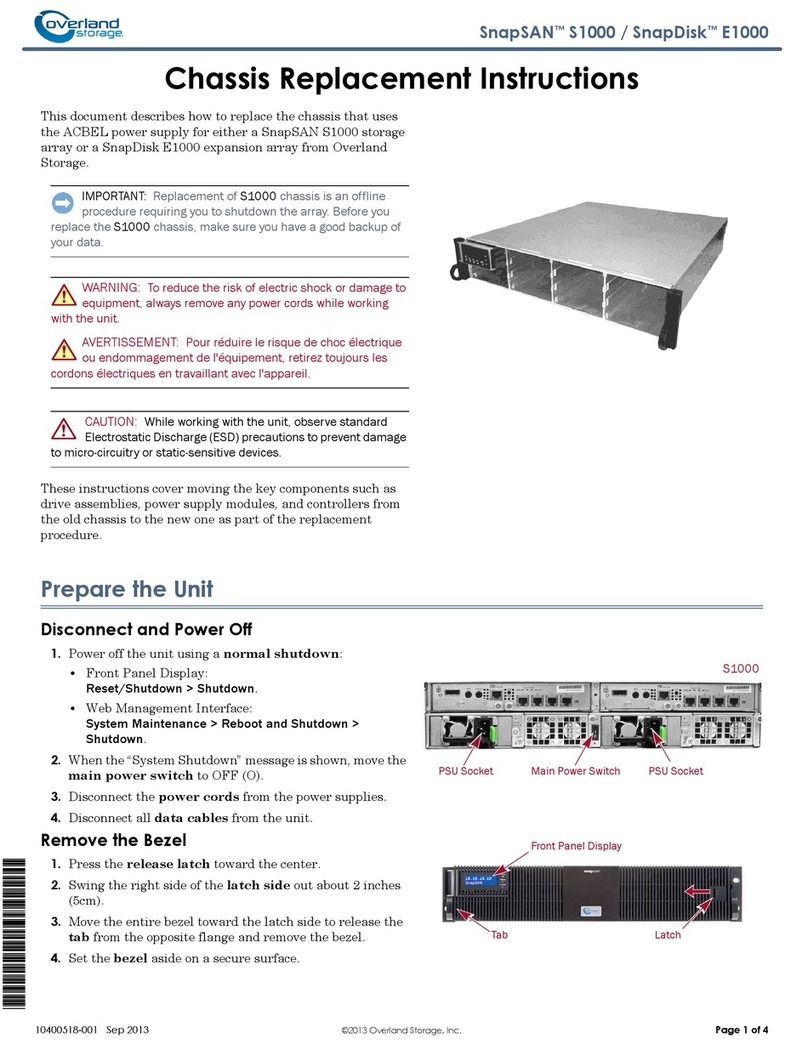
Overland Storage
Overland Storage SnapSAN S1000 Replacement instructions
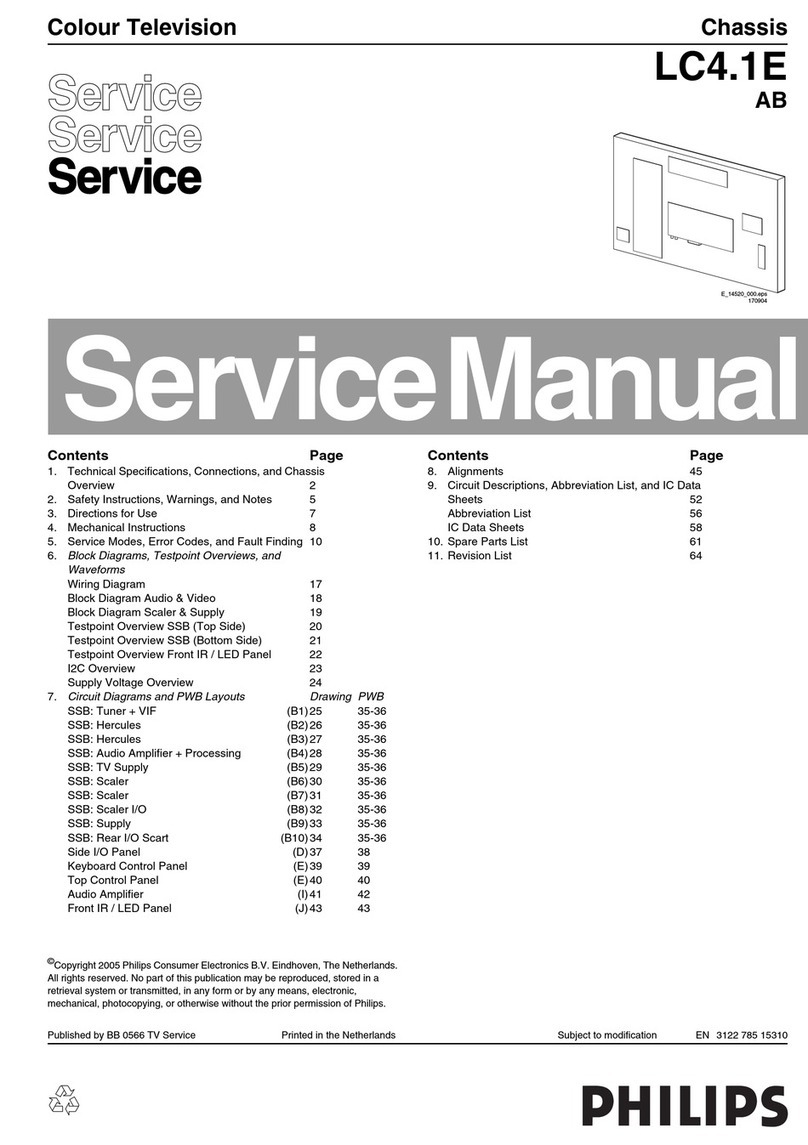
Philips
Philips LC4.1E A Service manual
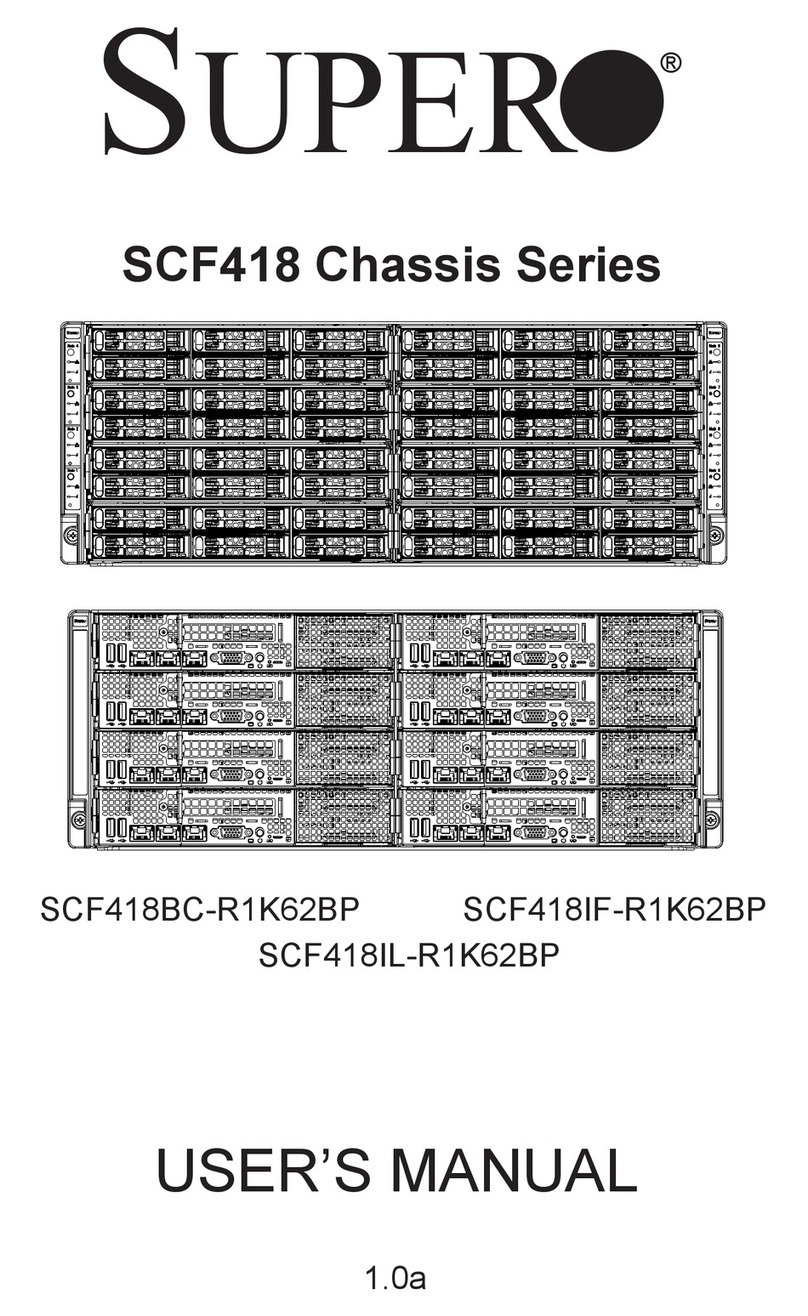
Supermicro
Supermicro SCF418 Series user manual
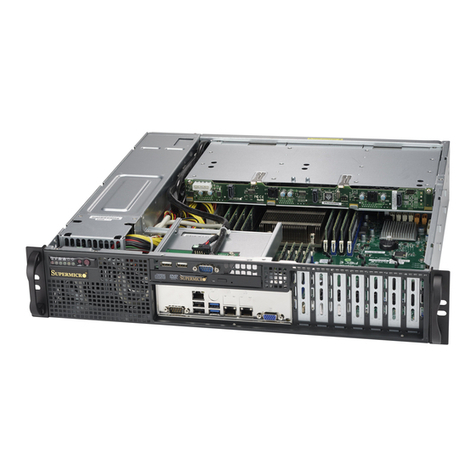
Supermicro
Supermicro SC823MTQ-R700LPB user manual
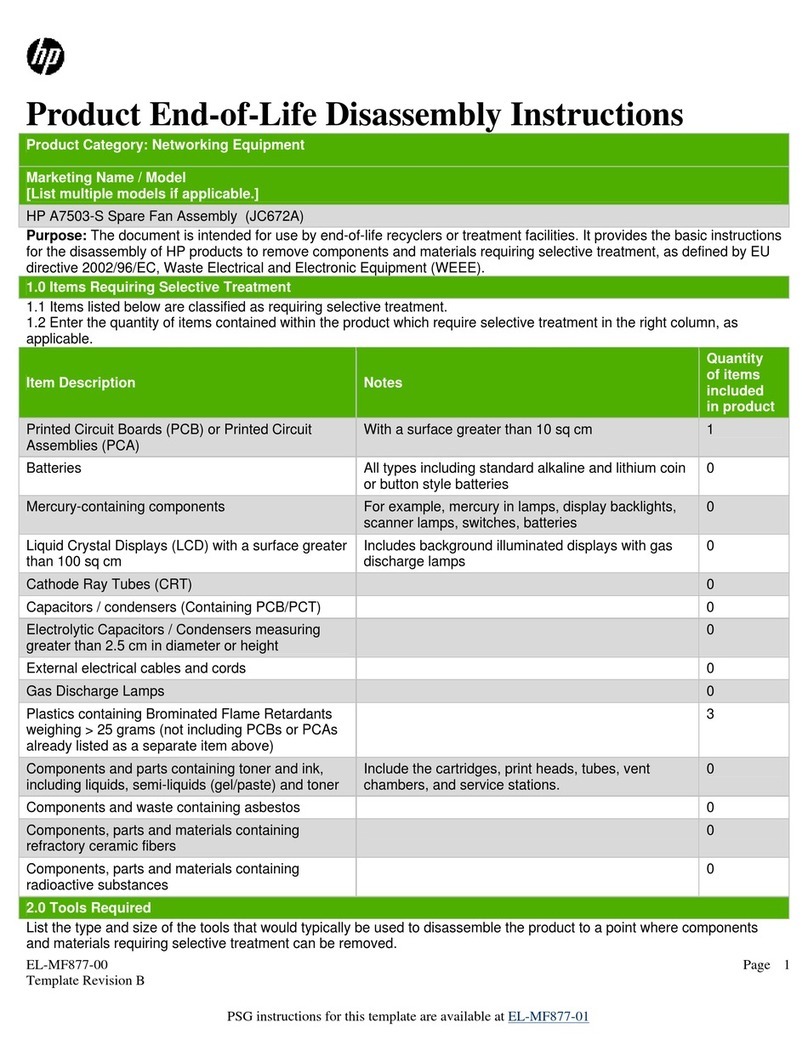
HP
HP A7503-S Product End-of-Life Disassembly Instructions
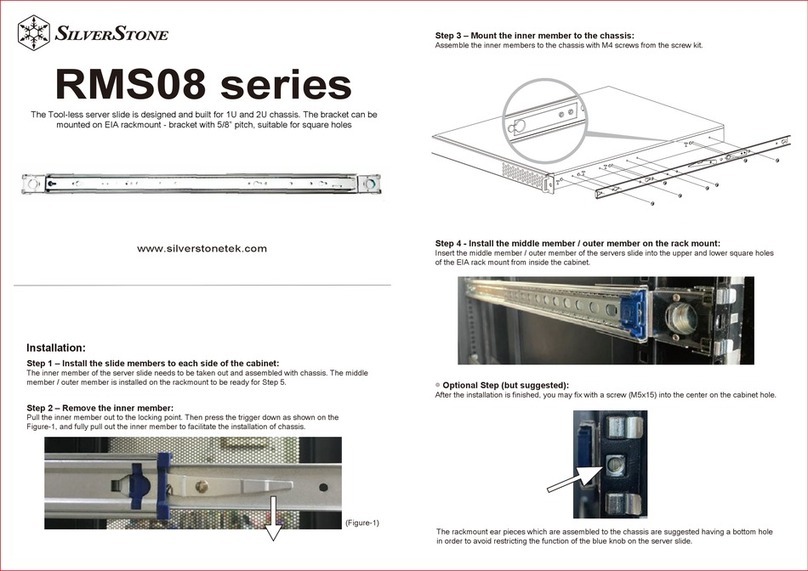
SilverStone
SilverStone RMS08 Series manual

